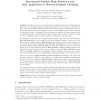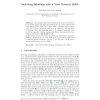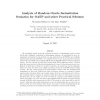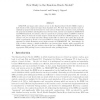31 search results - page 4 / 7 » How to Break MD5 and Other Hash Functions |
ASIACRYPT
2003
Springer
14 years 25 days ago
2003
Springer
We introduce a new cryptographic tool: multiset hash functions. Unlike standard hash functions which take strings as input, multiset hash functions operate on multisets (or sets). ...
ICC
2009
IEEE
13 years 5 months ago
2009
IEEE
Cryptographic hash functions are often built on block ciphers in order to reduce the security of the hash to that of the cipher, and to minimize the hardware size. Proven secure co...
CHES
2004
Springer
14 years 1 months ago
2004
Springer
Cryptographic algorithms implemented on smart-cards must be protected against side-channel attacks. Some encryption schemes and hash functions like IDEA, RC6, MD5, SHA-1 alternate ...
CRYPTO
2005
Springer
14 years 1 months ago
2005
Springer
We investigate several previously suggested scenarios of instantiating random oracles (ROs) with “realizable” primitives in cryptographic schemes. As candidates for such “in...
CRYPTO
2009
Springer
14 years 2 months ago
2009
Springer
RSA-FDH and many other schemes secure in the Random-Oracle Model (ROM) require a hash function with output size larger than standard sizes. We show that the random-oracle instanti...




